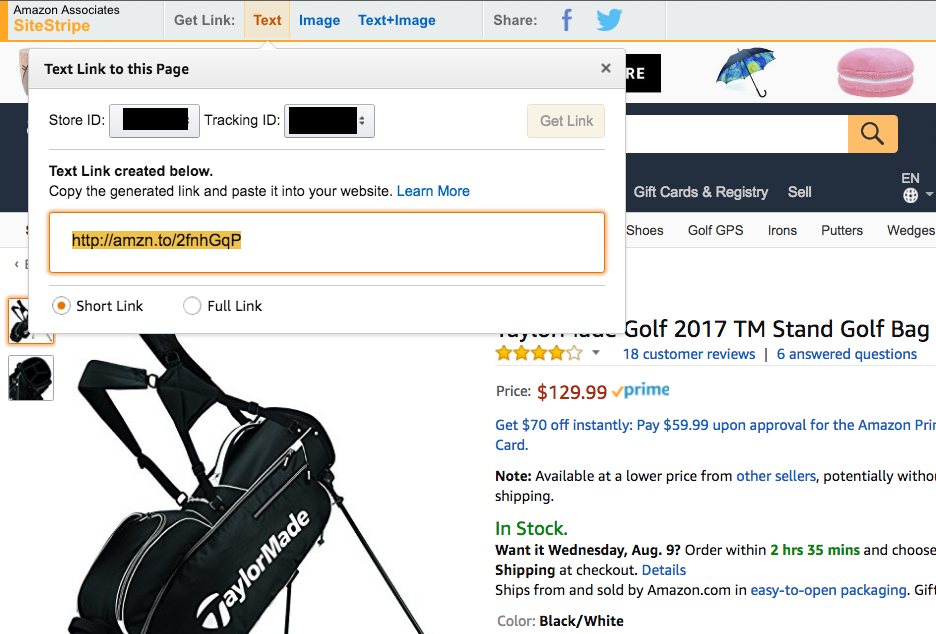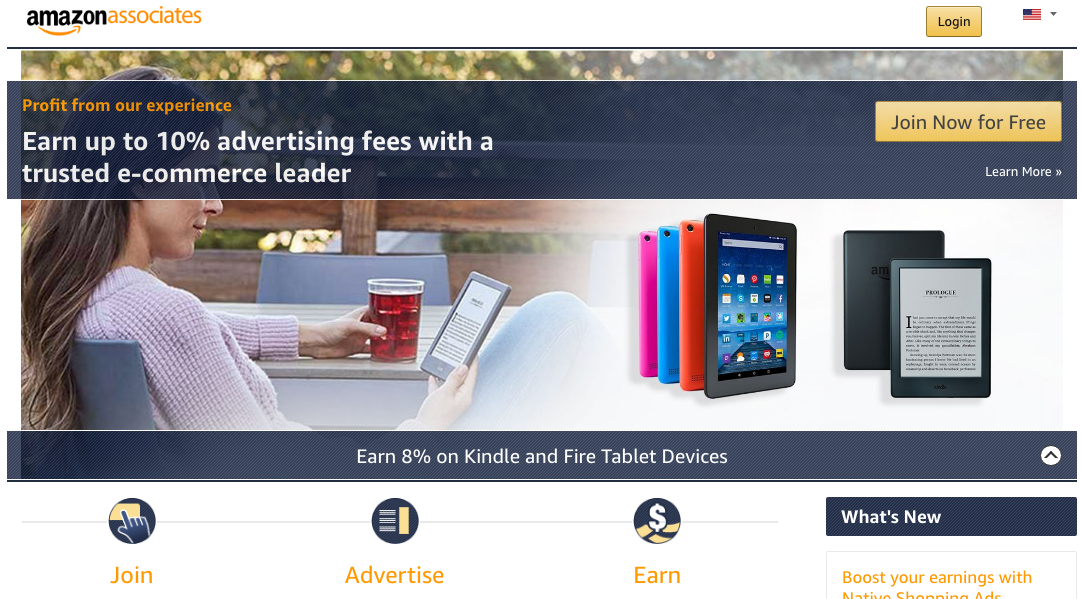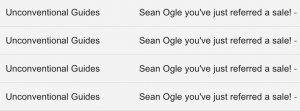It was about a week before I’d have to flee the country due to the crackdown, and I already had to leave my apartment due to gunfire and grenades going off constantly for 48 hours. (Seriously, true story).
My (now) good friends Derek and Clay had an apartment across town that they’d just moved into and despite only knowing them for a brief period of time they let me come crash for a few days while I figured out my next steps.
While all of this was happening, Chris Guillebeau was launching his latest product called the Empire Building Kit. Among other things, it featured an email a day for a year and was designed to help you build a business during that time.
I’d hardly done anything during the previous year to monetize Location Rebel (then Location 180), but when this was released, I figured “why not?” and wrote a review talking about how cool the program was.
I went down the street to grab a coffee and when I came back and refreshed my inbox it was 11:05 – 5 minutes after the sale began.
I refreshed my email as soon as I got back, and I couldn’t believe my eyes.
I had 4 emails, each of them saying “Sean Ogle You’ve Just Referred a Sale! You’ve earned a commission of $126.99.”
In a matter of 5 minutes, I’d made $500. I’d never made money like this via my website before. But it was that moment that I truly understood the power of building an audience and monetizing it through affiliate links.
In this post I’m going to walk you through everything you need to know to start affiliate marketing on your blog, even if you’ve never made a cent online before, don’t have a huge audience, or even if you haven’t started to build your website.
We’ve obviously got a lot of work to do, so let’s get going!
What is Affiliate Marketing?
Simply put, affiliate marketing is a way for you (the affiliate) to earn a commission for recommending products or services to your friends or readers.
To simplify it, here’s the 4 step process for how affiliate marketing works:
- You find a product you want to promote
- You sign up for their affiliate program
- You get a special link that allows the merchant to track the people who clicked your link
- If they buy the product, you get a commission.
Pretty simple, right?
It can get much more advanced, but in this post, we’re just going to start with the fundamentals and get you to the point where you’re ready to make your first commission.
How Does Affiliate Marketing Work?
There are a lot of different ways to track affiliates these days, but all are based on someone clicking your special tracking link.
The most common and basic type of tracking is via a cookie.
When an affiliate link is clicked, a small file called a cookie is stored on the users computer. Then they buy a product, the merchant can see that they were referred by you.
There are also more advanced methods based on the email used or IP address – but we won’t get into those here, we’ll stick to the basics.
How to Make Your First Dollar Through Affiliate Marketing
There are lots of approaches to making money with affiliate links. But if I was just beginning to learn how to become an affiliate marketer, and needed to say, make hundred bucks this week? This video shows you step by step, exactly how I’d do it:
One of the things I love about this type of monetization is that affiliate marketing for beginners is actually really easy to jump into (even without a bunch of technical knowledge).
Then as your site grows and your marketing skills grow you can begin to learn more advanced strategies and tactics.
How Much Money Can You Make With Affiliate Marketing?
The amount you can make will vary wildly – it honestly falls somewhere between zero and millions. Your income will be directly related to the type of offers you promote, how much traffic you get to the site, and your grasp of other online marketing skills like email marketing and SEO.
But in this post you’ll get a pretty good sense of the earning potential from different types of promotions.
How Do You Become an Affiliate Marketer?
Here’s the thing, you can pick just about any product that you can buy online, and there will be an affiliate program that will pay you a finders fee for referring a sale.
However, just because you can promote anything, doesn’t mean you should.
The most important thing to consider when selecting a product to market is, “is it relevant to your audience?”
For instance, for me to try and advertise for dumbbells on Location Rebel probably isn’t the smartest thing, because 99% of my audience could care less about them.
However, for me to promote, say, WP Engine a WordPress hosting company – makes much more sense, since almost every one of my readers either has or has considered starting a website.
And just recently, we promoted Streak as an awesome tool for freelancers to use to monitor leads right from their inbox. Once again, that’s something that speaks directly to the audience.
When I’m trying to decide what to promote I always ask myself the following questions:
- Do I use this product?
- Will the vast majority of my readers benefit from using this product?
- Is the buying process easy?
- Is there a good affiliate commission rate? (Not always necessary)
If I answer yes to each of these questions, then it’s probably a good fit and worth promoting.
Action Item: Make a list of products that you use that you think your blog audience would benefit from using as well. Try to think of as many as you can.
And remember, these can include complementary products as well. If you write about travel, for instance, you can include tons of complementary products like luggage, headphones, backpacks, and clothing too.
Physical Products vs. Information Products vs. Services
Ok, you should have an idea of which products you might want to promote – now it’s time to decide which of those are the best fit for you and your audience.
There are three different types of affiliate products you can promote:
- Physical Products
- Information Products
- Services
Each of these has pros and cons, and we’re going to look at those now.
Affiliate Marketing for Physical Products
Physical products are probably the easiest thing to promote for one reason, and one reason only: Amazon.
Amazon has the world’s largest affiliate program, and once you sign up, you can get a link for any product on the site, and earn a commission on it!
Check it out using this example from my site Breaking Eighty, a golf bag.
So you see at the very top there I have my Amazon Associates links. What I do is type the item into the the search box and then click on the type of link I want (usually text).
Here it is in action.
I type ‘golf bag’ into the search box.

And then, once I’m on the page of the bag I want to highlight in my review I click ‘text’ from the Get Link bar at the top.
You’ll see that there will be a store and tracking ID (I’ve blocked these) and then in the text box, a shortened link that will go right to this golf bag.

Anytime someone clicks that link, their cookie is recorded in Amazon as coming from me, so when they buy something I will get a small % of commission.
Pretty cool, right?
Well, yes and no.
Commission rates on physical products are notoriously low, due to all of the factors that go into selling them (manufacturing, wholesaling, shipping, etc). And in 2017, they made a few changes to the rate structure.
Here’s a look at part of the rate table today. You can check this link for a full listing of the rate information.

So you can earn a 4% commission on a lot of stuff, as high as 10% on luxury and fashion, and as low as 1% on video games.
Even if you’re selling thousands of items a month, you’re still making less than a 10% commission. Because of this, I know a ton of people who make a little bit of money off of Amazon affiliate websites, but few who make thousands.
Average Physical Product Commissions: 1-10%. Anything over 10% is very good.
How to Sign Up
Signing up for Amazon’s affiliate program is an excellent starting point because the chances are good you already use Amazon, are familiar with it, and your readers are too.
You can sign up and get links immediately from the Amazon Affiliate program right here.

If you want to find affiliate programs for specific companies, I would start with Flex Offers. Many of the largest companies work with them (for instance many of the golf companies I work with), and building a relationship with a larger affiliate network can lead to more opportunities that you might not have found otherwise.
Quick Tip
If you want to promote physical products, there’s probably a better place to do it than Amazon over the long term if your niche is somewhat specialized.
Amazon is tough because they have a 24 hour cookie. That means that if someone clicks your link, and then buys anything, anytime within the next 24 hours you get the commission.
This is an extremely short period of time. Compare it to some other affiliate programs where the time frame can be it 90 days or more.
For instance, when I’m promoting golf products for Breaking Eighty, I’ll usually earn a 6.5% commission based on how many items I refer on average each month.
I could join the Golf Galaxy affiliate program, which pays out 6-8%, but it has a 45 day cookie. So if someone clicks the link and then buys anything over the next 45 days – I get a commission.
This makes it much easier to make sales.
Action Item: If you know your niche and want to promote a physical product do a quick google search for “product name affiliate program” or “your niche affiliate program” to get an idea of what other options are out there.
Affiliate Marketing for Information Products
The next type of product you can promote is an information product.
This is usually something created by a blogger, marketer or author that teaches you how to do something.
Chris’ Empire Building Kit is a great example of an information product. As is Location Rebel Academy.
There are a lot of reasons that information products are so great to promote:
- Often they are higher priced, which means higher commissions
- They can have a personality behind them, which builds trust and makes them easier to sell
- They can have full marketing funnels behind them aiding in sales
- They solve a problem or provide a solution that your readers are looking for
Generally, it can be a little bit more work to become an affiliate for these products because often the creator is a bit more protective of who they let market the products.
There’s also no central place you can go to join like you could with Amazon. Usually, you’ll need to talk to the author directly or look for an “affiliates” page on their product site.
I’m pretty selective about the products I personally promote, but each year I make tens of thousands of dollars marketing information products.
The commissions are much higher than physical products which is why I like promoting them so much.
Information product commissions usually range from 30-50% – because the costs of production are so much smaller.
When I promote information products I usually look for high priced products created by people who are good at marketing. Why?
Because I send traffic to their funnel, and they convert the sale. My work is relatively minimal.
To give you an idea of the scope of this and what’s possible, over the last 2 years I’ve made over $20k in affiliate commissions from one product alone. This includes an occasional mention in a blog post, 2 webinars, and a handful of dedicated emails. That’s it.
To make things even better, I’ve seen the results people have had from the program, and they’ve been remarkable.
So if you have a course or product that you’ve personally used and seen a lot of success from, check and see if there’s an affiliate program – because if you’re going to recommend it anyway, you might as well get paid for it!
Affiliate Marketing for Service Products
The third type of product you can promote is a service. This is another big one for me, because of the nature of what I write about here.
My business doesn’t function without hosting, a theme, email software etc.
So it can be easy to make a sale on services because if I personally love and use them, there’s a good chance you will too.
One of the cool things about services, for instance, is that often there are recurring commissions. For instance, I make roughly 20% a month every time I refer someone to Sumo or Visual Website Optimizer – which are both services that I use religiously.
Over time that can add up to be a nice extra bit of income each month.
Think about which services you use and if it makes sense to promote them on your site. You can usually expect commissions between 15-30% on service products – sometimes higher or lower depending on what it is.
Why Affiliate Marketing is Better than Other Types of Blog Monetization
Most new bloggers assume that advertising or banner ads are the best way to monetize your site.
You couldn’t be more wrong.
They often get started with Adsense because it’s easy. To be honest I can’t remember the last time I saw an Adsense advertisement – thank you Adblock!
But seriously, not only will these make your site hideous, you have to have obscene amounts of traffic to actually make any real income.
Selling ad space to sponsors is almost as bad.
A good rule of thumb I’ve always used for how much you could sell ad space for is this:
Daily visitors divided by 10 is the dollar amount you can make per month on an ad.
Example:
If you get 1,000 visitors a day, you divide that by 10 and see that you can charge $100 a month for each ad on your site.
Now keep in mind this is just a rule of thumb, and depending on your niche it could be substantially higher or substantially lower.
If you’re just starting out, $100 a month could seem pretty good, but it takes a lot of work to get up t0 1k visitors a day – and if you get that many, you’re much better off monetizing via affiliate ads or ads for your own product.
If I had ad space on Location Rebel, I’d be much more likely to promote an affiliate product, or one of my own products than sell the ad space.
If someone clicks on it and buys my product I make $500 – 5 times more than I’d make for that sponsored ad. All I need is one every 5 months to make this a better option. Not only that, but it’s helping build my brand identity and reputation, rather than some random company.
How to Promote an Affiliate Offer
Ok, now the most important part.
By now you should have a good sense of what affiliate marketing is, have an idea of what products you want to promote and know how to get your affiliate links for them.
But if you don’t know how to properly promote them, it doesn’t really matter now, does it? Nope.
In this section, we’re going to look at some of the easiest and most successful ways to promote an affiliate offer.
The Resource Page
This is probably the easiest thing you can do right now to bring in a few sales over the coming weeks: create a resource page.
Regardless of what your business is, there are tools, products, and services that you use to run your blog or business. By putting together a page of all of your tools and resources, you’re creating something that’s shareable, as well as useful.
My resources page is called “60+ Essential Tools for the Location Independent Entrepreneur”.
Taking the same concept and going a step beyond is my book Location Rebel Arsenal. 

Want to grab the LR Arsenal and check it out for yourself? Click here.
I took the same idea, created a well-designed email, and then gave it to people after they joined the interest list for Location Rebel Academy.
This does dual duty in making affiliate sales, as well as growing my email list.
Product Reviews
If you’ve built up a lot of trust with your audience, product reviews are a fantastic way to generate some sales. This works for all three types of products you can promote, and I’ve personally seen success with each.
They key to a successful product review is honesty.
I’d generally only review things you like, but if there are drawbacks or little things that bother you – be upfront about them. Most people know that no product is perfect, so if you set expectations and are open with them, there’s a good chance they’ll buy it anyway.
Make sure you include the following items in any product review:
- Clear headline featuring your desired keyword (“product name review” for instance)
- Clear links for where to buy at both the top and bottom of the page
- A clear recommendation
- A personal story about how you use the product or why you recommend it
I’ve done this with a lot of success on my golf site.

Here’s a review I did for a rain suit that makes 4-6 sales per month. I said why I like it, I discussed the downfalls, and then made it clear why I’m ok with them.
Here’s another review I did for Sumo, one of my favorite marketing tools. And another I did on Bluffworks, an awesome travel pant that I love for trips.
Tutorials
Tutorials are easily one of the most effective strategies for driving affiliate sales. They can take a long time to put together, but it’s also totally worth it.
So what is a tutorial exactly?
Simple, you create a post that shows people how to accomplish something step by step – you then make a product or service one of the key components to success.
I’ve done a couple of these.
With my How to Build a Niche Site post, I talk about all the steps you need to take to get a niche site up and running. So that includes some of the tools I know and love like Sumo and ConvertKit.
I have another post, How to Set Up a Blog, that brings people step by step through the process using Bluehost. That’s another product I know and use. Readers can go through that post with no website at all and by the end have a bare bones WordPress site up and running.
I make hundreds of dollars a month off of both of these posts but I know they are also really valuable to readers and we make sure to update them frequently.
Here’s also another video shows you how to easily start a blog:
Comparison Posts
These can be another really effective strategy for making affiliate sales.
It works well when there are either two products that are very similar and people are thinking about one or the other.
A great example would be comparing the PlayStation 4 vs the Xbox One.
If people are looking for a new game console, it’s probably going to be one of the two. That said, I don’t recommend you choose these because due to the overwhelming amount of information about both – it’d be hard to rank well in the search engines for any terms related to them.
A personal example is a post I just did about two competing golf technologies Game Golf and Arccos Golf. They both do variations of the same thing, but no one had played as many rounds with both systems as I had. So I created a definitive post which has sent a lot of traffic, and a few sales, my way over the last couple weeks.
Another type of comparison post that works well is when there are a ton of options, and people don’t know what to choose. Web hosting is a great niche for this.
Recently, I created an in-depth post that compared and contrasted all of the different options for hosting – and helped the user to select the best option for them. It didn’t really matter which one they chose because I’d get a commission no matter what.
Email Series
This is probably the most effective (and most advanced) method we’ll talk about for making affiliate sales: your email list.
If you’re getting to the point where you have a sizable list, you could create a series of emails to promote a product. This works best if it’s an information product with relatively high commissions.
For this to work well you should have the following:
- A list of at least 1,000 people
- A product you’ve either used and had success with, or have a very good story/reason for promoting
- A product that converts well (talk to the creator about this)
I’ve found a 3 email series usually works well for this, but don’t start going this direction until you’ve had some experience with either email marketing or the other affiliate strategies we’ve talked about.
Some Final Affiliate Marketing Strategies and Tips
If you follow along with the strategies above, you’ll be making affiliate sales in no time off of your blog.
To improve your chances even more, I’ve got a couple more tips for you.
Use Pretty Link
Affiliate links are generally pretty ugly. They’re long links, that often go to a secondary domain, and are pretty clear that they’re an affiliate. Download the plugin Pretty Link to make your links look much more friendly.
Develop a Good Relationship with an Affiliate Manager
Most major affiliate programs for physical products or services will have an affiliate manager, whose sole job is to help you generate more sales.
You’ll need to prove to them that you have some potential, but do your best to get them on the phone before you start doing any major promotions. They’ll be able to give you a good sense of what works, what doesn’t, and potentially even give you a boost in commissions.
One phone call nearly doubled my commissions for one hosting company in particular.
Wrapping Up
I know that was a lot of information, but if you’ve been struggling with figuring out how to start monetizing your blog, the strategies above are a fantastic starting point.
It’s how I made my first dollars online, and it has the potential to create a win/win for both you and your readers!

Comments
Post a Comment